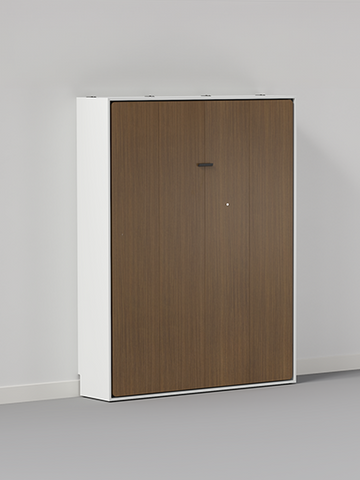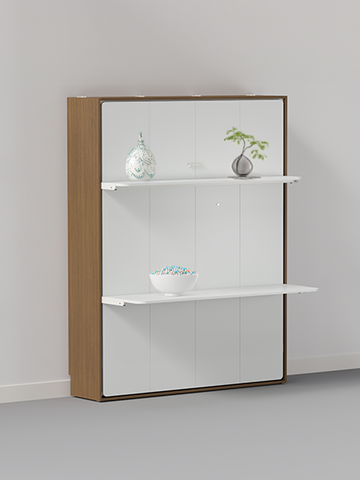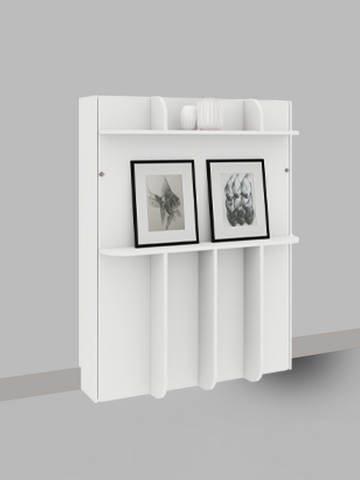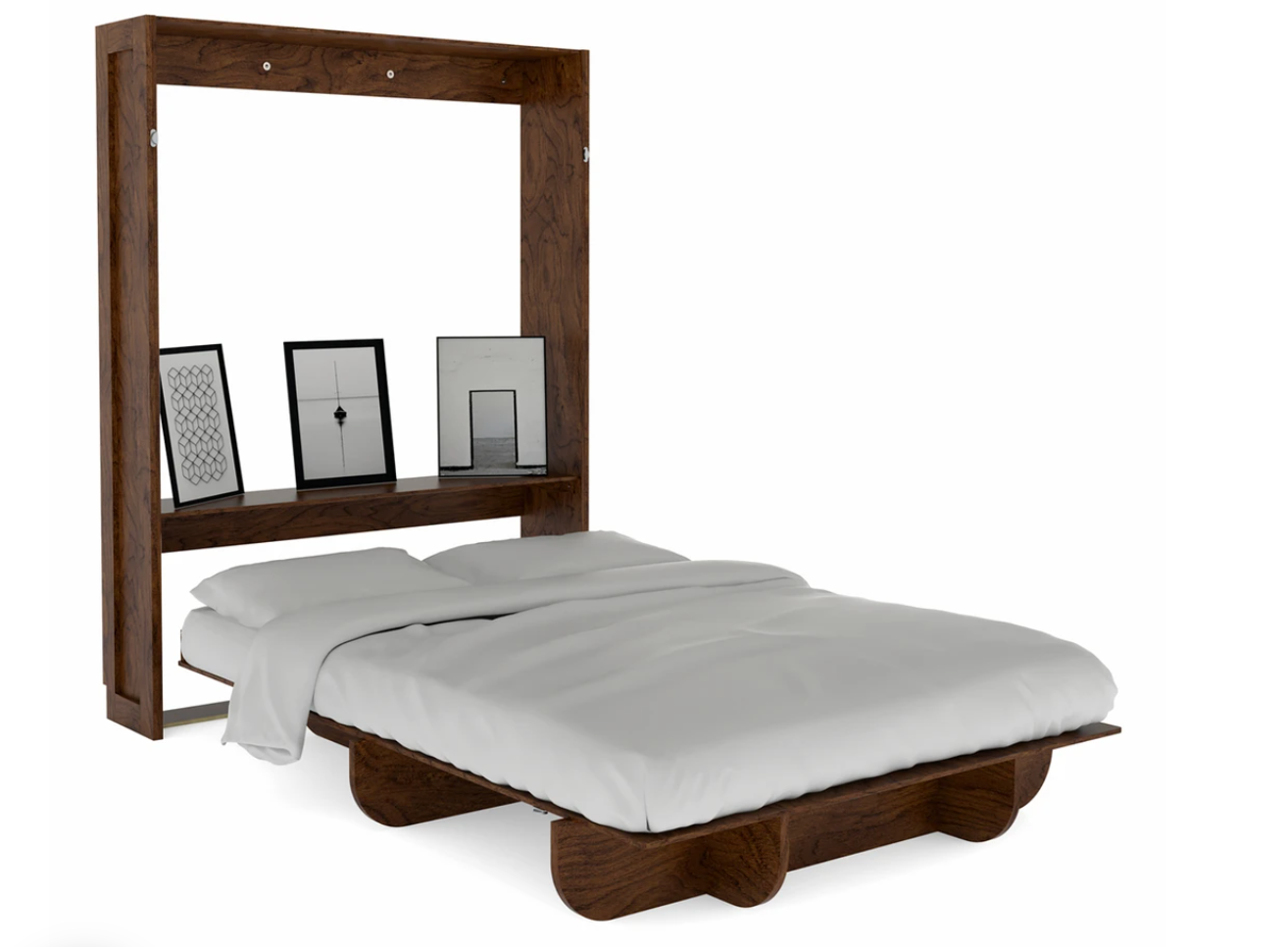A Murphy bed is a clever piece of furniture that allows rooms to serve multiple purposes. Many people recognize the wall bed for its unique fold-up lifting system that allows it to seamlessly become flush with a wall when it's not in use. Once the bed is folded up, you have valuable floor space to go about your day.
But how exactly do Murphy beds work? There are two systems to consider: The traditional metal spring or pistons systems and the modern Lori Bed system, which doesn’t involve metal coils or force-loaded components.
The Early Design

William Lawrence Murphy used a metal spring method when he first came up with the idea for the fold-out bed around 1900 in San Francisco. Murphy created the wall bed to disguise his mattress within a closet in the confines of his small studio apartment.
Early designs used springs or pistons to lift and lower the frame. The metal mechanisms were primitive, clunky, and sometimes dangerous, but the system achieved the goal of allowing a mattress to fold up into a cutout space in the wall or cabinet with a hinge.
The majority of wall beds on the market today still rely on this often-costly metal spring system, however, the technology has improved over the century.
A Modern Design
Unlike its counterparts on the market, the Lori Bed’s design allows for high quality at an economical price point without cumbersome metal springs or pistons. The inventor of the bed, Lori Moore, found that designing out the metal lifting mechanism eliminates one of the biggest costs.
Instead of using the force of springs or pistons, the Lori Bed can be lifted and lowered by hand using your and your lifting partner's strength. And as a result of this new design, the company was able to pass that savings on to the customer. This makes modern Murphy beds different from their first versions.
Some things haven’t changed. Even back then, many Murphy beds didn’t require a box spring, and most still don’t. The mattress rests on a platform and is secured by elastic straps or a metal bar to prevent sagging when it's in the closed position. Not having to purchase a box spring is another cost-saving advantage of this hidden bed.
High-function & High-design

(Photo credit: By Brittany Goldwyn)
Today, wall beds come in a variety of sizes and in both horizontal and vertical orientations. There are Murphy bunk beds and even models that double as pull-down sofas.
Clever home design lovers often take their Murphy beds to the next level, combining high-function and high-design by adding custom upgrades, such as LED lighting or chalkboard paint, to make the wall beds that much more a part of their personal aesthetic.
One of the greatest advantages of choosing a Lori Bed, especially for those with an eye for design, is the ability to customize its look. The company has pre-finished bed frame models that tie into any color scheme in beautifully finished real wood to create your own version of a perfect Murphy bed.
When you buy your own Murphy bed, you can give another look to its pre-made finish to make it a worthy addition to your guest room. Before you can install it, you need to have enough wall space, measure the floor space, and follow instructions from the Murphy bed manufacturers to secure the bed’s attachment.
The makers also offer unfinished Lori’s Murphy Beds, which are crafted from 100 percent cabinet-grade poplar plywood that can be painted or stained to the color that your heart desires.
At a glance, fold-down Murphy beds can appear complicated to maneuver, but modern technology has made them simple and easy to use. What are your burning Murphy bed questions? Let us know in the comments, and we’ll answer them in an upcoming blog article.











